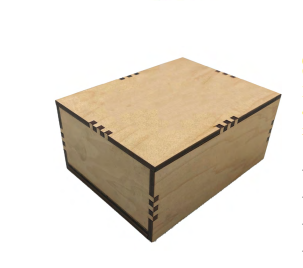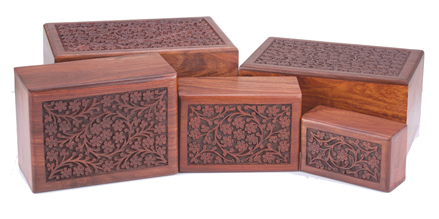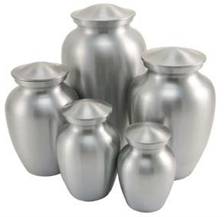EUTHANASIA
We understand how difficult it is to make the decision to euthanize your beloved pet. We are honored to help you say goodbye and to make the experience easier and more comfortable for you and your pet. Thank you for trusting us with the care of your family member. Our greatest hope is that you will remember this as a peaceful passing and that your loved one was given a grace-filled goodbye.
Sincerely,
The Doctors of
East Central Veterinarians
PREPARING FOR YOUR PET’S EUTHANASIA
PREPARING FOR YOUR PET’S EUTHANASIA
How do I know when my pet needs to be euthanized?
This is one of the hardest decisions a pet owner makes. We want to treasure the good days without letting our pet suffer. As a pet parent, there may come a time when it is necessary to assess their comfort level. Along with guidance from your veterinarian, reviewing the quality of life assessment can help determine if your pet is still living a good quality of life.
Where do I want the euthanasia appointment to occur?
Many people choose to say goodbye to their pet at their veterinarian’s clinic. We strive to make this difficult day go as smoothly as possible for both you and your pet. Depending on the weather we are able to accommodate the request to have the euthanasia appointments occur outdoors. If you would prefer an outdoor appointment, please let us know when scheduling the appointment so we can accommodate your request. Some people choose to say good-bye at their homes. At this time we are not able to offer at-home euthanasia services but we recommend contacting Pet Loss at Home, Blue Skies Pet, or MNpets.
What should I do with my pet after euthanasia?
Knowing beforehand what you want to do with your pet will save you from having to make that decision while you are going through the grieving process. It is helpful to make these decisions ahead of time with your family. Pet cremation is one of the most common options available today. You can choose to have your pet’s ashes returned or not.
Another option is Aquamation, also known as alkaline hydrolysis, is a water-based, flameless aftercare method that uses gentle flow, warmth, and alkalinity to return remains to ash.
If you choose to have the ashes returned, they are collected and placed in an urn or specially designed box for you. You then have the choice of keeping, burying or scattering the ashes in a special place. If you choose to keep the ashes there are many beautiful urns available to memorialize your pet. If you are considering burying your pet, please know that most ordinances and regulations prohibit it.
What urn options are available?
You have the choice of five different urns that are included as part of the individual euthanasia service. Your pet’s ashes will be returned in the Woodchuck box with an engraved name plaque unless you indicate otherwise.

Woodchuck

Sheesam

Tree of Life – available in oak or walnut colors

Decorative Tin – this is nice if you are planning on spreading the ashes

Metal Urn
For more options on urns and memorials, please review our complete catalog. If you desire, we can have ashes returned in an urn and have some used in creating jewelry or glass memory keepsakes. If you have multiple people who want ashes, the ashes can be placed into multiple urns.
WHAT TO EXPECT THE DAY OF EUTHANASIA
- Scheduling the appointment – When scheduling, we schedule to ensure time can be dedicated to you and your pet. This also gives you more privacy with fewer people around during your time of grief. If you are unsure if it is time to euthanize your pet, we can start with a quality of life assessment appointment.
- Fill out the paperwork – The law states that owners must give written, signed consent for any euthanasia procedure performed on a pet and confirmation that the pet has not bitten anyone in the past ten days. We will also need to know the aftercare you want for your pet. Making the decision about aftercare prior to the procedure is highly recommended so you can think about your options. For example, choosing to get your pet’s ashes back in a special urn.
- The Procedure – We start by administering a sedative medication. This helps to ensure your pet is peaceful and does not experience pain. This medication takes 5-10 minutes to take full effect. At this point, your pet will be very relaxed and maybe sleeping. When you are ready, the final injection is administered, this is a high dose of an anesthesia drug that will cause the heart to stop and your pet will pass without experiencing pain.
After euthanasia, you will have three options:
- Individual Cremation
Your pet’s body will be taken to our trusted cremation service center. Once your pet’s remains have returned to us we will call you to let you know that you can pick them up. This process usually takes 7-10 days.
- Communal Cremation
Your pet’s body will be cremated, with no remains returned.
- Home Burial
Each city has ordinances that regulate home burial. We recommend burial at least 3 feet deep. Consider burial with a note or a much-loved toy.
WHAT TO DO IF YOUR PET PASSES AT HOME
Losing a beloved pet is never easy, and we understand how overwhelming it can feel—especially if it happens at home. Below are some steps you can take during this difficult time.
1. Take a Moment
Allow yourself and your family a moment to grieve. It’s okay to sit with your pet, talk to them, or say goodbye. This can be an important part of the healing process.
2. Ensure Your Pet Has Passed
Sometimes pets may appear unresponsive but are still alive. Look for signs such as:
- No breathing or heartbeat
- No response to sound or touch
- Eyes fixed and unblinking
If you’re unsure, please contact us or an emergency vet immediately.
3. Preserve the Body (If Immediate Transport Isn’t Possible)
If immediate arrangements cannot be made:
We recommend placing your pet in the freezer to preserve their body until you are able to bring them to our clinic.
Here’s how to do this respectfully:
- Gently wrap your pet in a clean blanket or towel.
- Place them in a heavy-duty plastic bag, sealed tightly.
- If available, place the bag in the freezer. This helps prevent decomposition and ensures we can handle aftercare appropriately.
- If a freezer isn’t available, a cool garage or basement may be used temporarily, but the freezer is strongly recommended.
We understand this step can be difficult emotionally—please reach out to us if you need help or support during this time.
4. Contact Us for Aftercare Options
We can help you with:
- Cremation services (private or communal)
- Home burial guidance (if legal in your area)
- Memorial options such as clay paw prints
Please call our clinic at 763-689-4604 to discuss your options. We’re here to support you with compassion and respect.
Seeking Answers After the Loss of Your Pet?
Losing a beloved pet is never easy—whether their passing was expected after a long illness or came as a sudden shock. In times of uncertainty, many pet parents find comfort in understanding what happened.
If you’d like to know more about the cause of your pet’s passing, we can help you arrange a necropsy (a pet autopsy) through the University of Minnesota Veterinary Diagnostic Lab.
Please know that choosing to have a necropsy does not prevent you from having your pet cremated or receiving their ashes afterward. We’re here to support you through this process and help in any way we can.
BEREAVEMENT SUPPORT
Often, our pets are much more than just pets – they are family, friends, sidekicks, and teammates. Experiencing the loss of a pet is a very personal and individual thing. It can be surprisingly more challenging and painful than we expect.
Grieving the loss of a pet can occur on a physical, emotional, behavioral, cognitive, and spiritual level. It can be exhausting. Our hearts feel broken, our minds alternate from confusion to guilt. We spend a lot of time asking “could I have done something better or different?” These feelings are all normal.
Depending on your comfort level, there are many ways to express your feelings. Some ideas are to:
- Write about your loss in a journal.
- Write a private letter to the pet you lost.
- Create a memorial in a frame (or via your personal social media page.) These memorials can include pictures or videos of your pet, your pet’s identification tags, and/or an urn containing your pet’s ashes if you opted to have the ashes returned to you.
- Use a portion of their ashes to be made into a pendant or jewelry.
- Plant a tree in honor of your pet.
- Make a donation to or volunteer your time at a local organization of your choice.
While friends and family members can offer support, they may not understand the sensitivity of your grief and can unintentionally react in a way that leaves you feeling hurt. There are other ways to acquire the support and comfort you may need at this time. Many seek comfort through local animal grievance support groups or through a pet loss support hotline. It is healthy and even encouraged to talk about the life you shared with your pet as this is an important part of your healing process.
PET LOSS GRIEVANCE SUPPORT RESOURCES
- COMPANION ANIMAL LOVE, LOSS & MEMORIES (CALLM) The University of Minnesota Veterinary Medical Center (VMC) offers a bereavement group to support those grieving the loss of a beloved animal. CALLM meets the second and fourth Wednesday of every month from 6:30pm – 8pm. Preregistration and screening is required: 612-624-9372
- ANIMAL EMERGENCY & REFERRAL CENTER OF MINNESOTA PET LOSS SUPPORT GROUP The group meets via Zoom on the fourth Tuesday of every month from 7:00-8:30pm. For more information please visit https://aercmn.com/for-pet-owners/resources/pet-loss-support/
- THE ANIMAL HUMANE SOCIETY OF GOLDEN VALLEY PET LOSS SUPPORT GROUP The support group is led by compassionate facilitators and is provided to the public for free. For more information, visit www.animalhumanesociety.org/services/pet-loss-support-group
- VETERINARY WISDOM FOR PET PARENTS www.veterinarywisdomforpetparents.com
- THE AMERICAN SOCIETY FOR THE PREVENTION OF CRUELTY TO ANIMALS (ASPCA) PET LOSS HOTLINE www.aspca.org/pet-care/pet-loss
- TUFTS PET LOSS HOTLINE 508.839.7966 http://vet.tufts.edu/petloss/
- VHA Pet Memorial https://veterinaryha.org/in-memoriam/
RECOMMENDED BOOKS FOR ADULTS
- A Dog’s Purpose by W. Bruce Cameron
- Saying Goodbye to the Pet You Love: A Complete Resource to Help You Heal by Lorri A. Greene, Ph.D. and Jacquelyn Landis
RECOMMENDED BOOKS FOR TEENS AND CHILDREN
- Goodbye Friend, Healing Wisdom for Anyone Who Has Ever Lost a Pet by Gary Kowalski
- Healing Your Grieving Heart ‘For Teens:’ 100 Practical Ideas by Dr. Alan Wolfelt
- Saying Goodbye to Your Pet: Children Can Learn to Cope with Pet Loss by Marge Eaton Heegaard
COMMON QUESTIONS
- Is euthanasia painful?
- No. The only discomfort felt by the animal might be during the process of sedation.
- Is euthanasia instant?
- Euthanasia solution generally produces unconsciousness within minutes and sometimes seconds. Your veterinarian will listen for a heart-beat using a stethoscope and pronounce the pet deceased when the heart stops.
- What can I expect to see happen as my pet passes?
- When the animal passes away, there are specific events and signs that you might witness. The animal may display intermittent gasps after the heart has stopped because the diaphragm of the animal contracts spasmodically as the animal’s brain and muscles are shutting down. The animal may also urinate and/or defecate. The most important thing to remember is that these events are normal and are not painful for your pet.
- Will my pet’s eyes close?
- A pet’s eyes usually remain open after it has been euthanized.
- What do I tell my kids?
- This may be your child’s first experience with loss and feelings of grief. This could be a good opportunity for you to teach your child to accept and express his/her feelings in healthy ways, free of expectation and embarrassment. While it is tempting to try to protect your child from emotional pain, telling your child that the pet ran away or went to live with someone else could invoke feelings of abandonment and rejection. It is best to be as honest as possible with your child.
- Will my other pets at home sense this loss too?
- Research shows compelling evidence that your other pets can sense the loss of another. In addition, your pets will often pick up on your emotions. Understand that during this time of loss and grief, your other pets may need extra attention and comfort as well. Signs that your other pets may be experiencing grief can include, but are not limited to:
- Increased desire for attention
- Separation anxiety
- Decreased eating/drinking
- Increased vocalization
- Increased sensitivity to noise
- Searching for the missing pet
Some animals to seem unaffected by the absence of a pet and that is completely normal. Treat these animals just as you always have.
Pets that are grieving and showing obvious signs of loss can be given special attention through extra pats and rubs, walks or time outdoors, and appropriate treats to encourage their appetite. Even giving them a blanket with the deceased pet’s scent on it may bring comfort.
NOTE:
It is important to be conscious of the duration and intensity of comfort giving, as animals are quick to adapt to this special attention. Too much of this can reward and develop unwanted behavior. For example, giving treats each time the pet vocalizes or becomes restless will encourage that behavior.
Keep a close eye on elderly pets. Decreased appetite and thirst is far more serious in elderly animals and can cause life-threatening issues.
Be aware of the changes in your animal hierarchies, especially dogs, that may occur following a pet’s passing. If the deceased animal was a dominant animal, you may notice an increase in aggression with your remaining pets as they compete for status and dominance in their new arrangement. Talk to your veterinarian about these behavioral changes should they occur.
